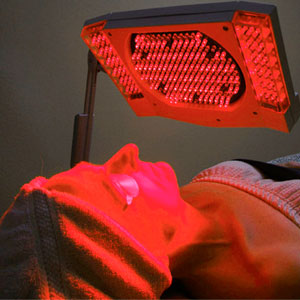 Safety Tips for Red Light Therapy Bulbs and Devices
Safety Tips for Red Light Therapy Bulbs and Devices
LED-based, non-laser red light therapy is very safe for most people. The main concern with red light therapy is the brightness of the LED’s on the eyes. People with skin photosensitivity from conditions such as rosacea or from taking certain prescription medications could have skin irritation from the light. Some other people have conditions that bright light is known to affect, such as seizures, migraines or bipolar disorder. Below are some safety tips for using red light therapy.
- Read the manufacturer’s instructions and safety information before using the device.
- Do not stare into the bulb or device when it is switched on. As long as you do not have a medical condition affected by light, a very brief glance in the light’s direction might be okay, but honestly it’s a much better idea to play it safe. Avoid staring into the light source when it is on. This includes infrared LED’s, which emit light that is not visible.
- Always wear appropriate eye protection when using a red light therapy bulb or device. For non-laser, LED-based light therapy that is red light only, tanning goggles may be sufficient. To be on the safe side, I do not recommend directing the bulb/device towards unprotected eyes for prolonged periods of time, even if your eyes remain closed. Another option would be to choose goggles meant to block out all light. And if your red light therapy bulb or device includes infrared or blue LED’s, tanning goggles may not be sufficient.
- If you have any condition that could be affected by exposure to light, be sure to discuss red light therapy with your doctor before trying it. Examples of conditions that can be affected by light exposure include seizures/epilepsy or migraines that are triggered by light flashes. Other possibilities include medication side effects that cause photosensitivity and medical conditions where bright light exposure may have unusual effects, such as bipolar disorder.
- Some common skin care products can cause temporary photosensitivity, so you should not do your red light therapy treatments immediately after using them. Examples include vitamin C powder/cream/serum, retinol or lemon juice. If the product recommends avoiding light or sunlight for a period of time afer application, you should also avoid red light therapy treatments for that period.
- Many medications also cause sensitivity to light, either through the eyes or the skin. A full list of these medications is too long to list here, so you should check with your doctor or pharmacist before trying red light therapy if you take any type of medication. Some types of medications that can cause photosensitivity include anti-histamines, coal tar derivatives, psoralens, NSAID’s, tetracyclines and tricyclic antidepressants.